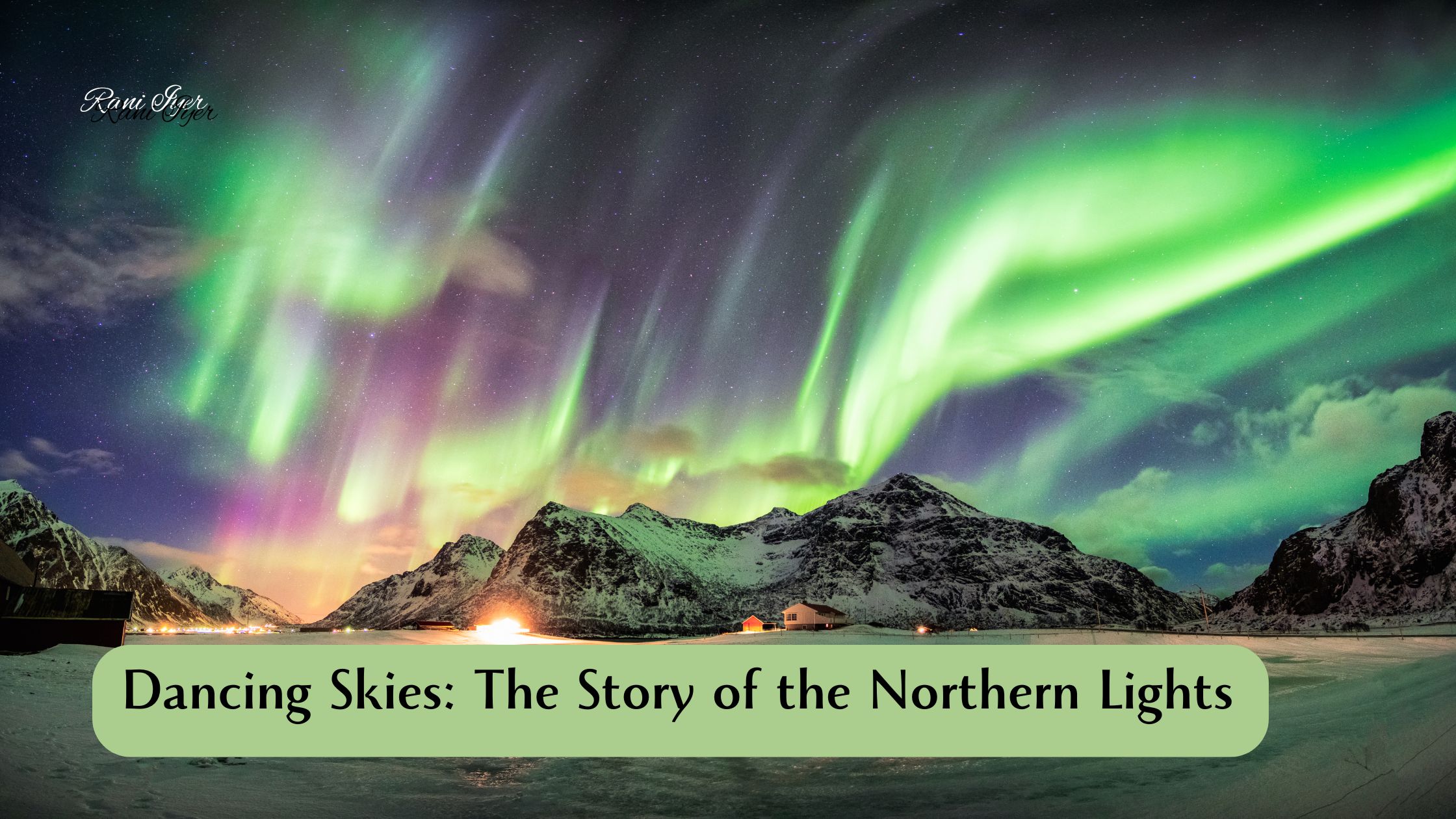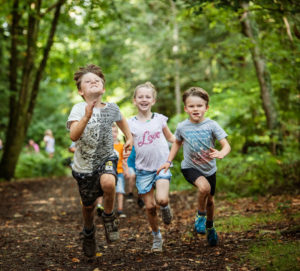Somewhere on a frozen lake in northern Norway, a group of bundled travelers stand in silence, eyes cast upward, breath crystallizing in the icy air. The dark canvas of the night sky begins to shimmer. First a faint green hue, like a ghostly mist. Then, as if awakened, the heavens erupt into rippling waves of emerald, violet, and pink. The aurora borealis has arrived. And with it, that primal, wordless joy of witnessing something ancient and magnificent.
Welcome to the world of the Northern Lights.
A Celestial Ballet: The Wonder of Nature
The Northern Lights—aurora borealis—are one of the greatest natural spectacles on Earth. Named by Galileo Galilei in the 17th century (after Aurora, the Roman goddess of dawn, and Boreas, the Greek god of the north wind), this phenomenon has inspired legends, rituals, and songs across Arctic cultures. The Sámi people of Scandinavia believed the lights were the souls of the departed. The Inuit saw them as spirits playing ball with a walrus skull. To ancient Norsemen, they were reflections from the shields of Valkyries.
Whatever the belief, the awe was universal. That wonder remains true even in the age of science.
Fire in the Sky: Indigenous Beliefs About the Northern Lights
The Northern Lights have danced across the skies for millennia—long before Galileo gave them a name or scientists explained their origin. For Indigenous peoples of the circumpolar North, the aurora was not a mystery to be solved, but a presence to be respected, feared, or even welcomed. These cultures didn’t need telescopes or satellites. They had stories.
Here’s a grounded look—no fluff, no embellishment—at how Indigenous communities understood the aurora borealis, shaped by environment, tradition, and centuries of oral history.
1. Sámi People (Northern Scandinavia and Russia)
Belief: The Northern Lights were deeply respected—and often feared.
In Sámi culture, the aurora was seen as a powerful force, not to be mocked or whistled at. Whistling could summon the lights closer, putting people in danger. The lights were sometimes interpreted as the energies or spirits of the dead. Others believed they were souls moving between realms.
Behavioral Codes: There were strict taboos. Don’t draw attention to the lights. Don’t wave at them. Don’t make noise. The fear wasn’t irrational—it reflected an understanding of the unpredictability and intensity of nature.
2. Inuit (Canada, Alaska, Greenland)
Belief: For many Inuit communities, the aurora was tied to spirits.
Some Inuit groups believed the lights were the souls of the dead playing games—often described as kicking or tossing a walrus skull. Others said the lights were spirits dancing. The sound sometimes heard during aurora activity (a faint crackling or popping) was interpreted by some as the lights communicating or even singing.
Variations: In some parts of Alaska, the lights were said to be spirits trying to communicate with the living. In others, they were seen as omens—sometimes good, sometimes bad.
3. Cree (Canada)
Belief: The Northern Lights were spirits of ancestors dancing in the sky.
For many Cree, the aurora was a positive presence. It offered comfort—a sign that loved ones who had passed on were watching over the living. The lights’ movements were interpreted as dancing, especially during times of celebration or ritual.
Ritual Use: The aurora might be invoked or respected during ceremonies. Like other groups, the Cree often held beliefs that discouraged drawing undue attention to the aurora.
4. Dene (Northwest Territories, Canada)
Belief: The aurora was considered spiritual—associated with ancestors and often with animal spirits.
For some Dene peoples, the lights were not only the spirits of the dead but also held a role in moral behavior. If a person had done something wrong or acted disrespectfully, the aurora could respond. Like among the Sámi, whistling at the lights was taboo and could bring harm.
5. Algonquin (Eastern Canada)
Belief: The Algonquin explained the lights as fires lit by Nanahbozho (or Nanabozho), a culture hero and spirit figure, to remind the people that they are being watched and cared for.
Nanahbozho is a key figure in many Anishinaabe stories—part trickster, part creator. The aurora, in this context, is a cosmic message, not simply an atmospheric event.
Common Themes Across Cultures
Despite differences in geography and language, Indigenous beliefs around the Northern Lights share striking similarities:
- The aurora is spiritual: Most cultures link the lights to souls—of ancestors, animals, or supernatural forces.
- Caution and respect are central: The aurora is rarely something to be trifled with. Behavior around it is often regulated by taboo.
- Interpretations are rooted in lived experience: Indigenous knowledge isn’t “myth” in the pejorative sense. It’s adaptive, layered, and built from generations of observation.
The Value of Indigenous Knowledge Today
Why do these beliefs matter now?
Because they reflect a worldview where nature is not something to conquer, but something to live with. The aurora isn’t “explained away” by science; it’s expanded—science gives us the how, but Indigenous knowledge offers the why. And in a time of climate crisis, these perspectives remind us that respect for the Earth begins not in the lab, but in the stories we tell. Magical Sky phenomenon.
The Science of the Sky: How the Northern Lights Work
What causes the Northern Lights? Behind the poetry is a dance of physics.
The sun is not just a life-giver; it’s also an explosive powerhouse. During solar storms, it hurls charged particles—electrons and protons—toward Earth. When these particles reach our planet, they’re pulled toward the poles by Earth’s magnetic field.
As they collide with gases in the atmosphere—primarily oxygen and nitrogen—energy is released in the form of light. Oxygen gives us green and red auroras, nitrogen blues and purples. The result? A celestial light show fueled by our connection to a distant star.
This spectacle is most visible in polar regions, where the magnetic field lines converge—hence the “northern” in Northern Lights.
But what about the south?
Siblings in the Sky: Aurora Borealis vs. Aurora Australis
The Southern Lights, or aurora australis, mirror their northern counterpart almost exactly. Visible from Antarctica, southern Australia, New Zealand, and parts of southern South America, these auroras are just as spectacular—but far less observed due to their remote locations.
Unlike the North, where tourism infrastructure and Arctic communities make aurora-hunting relatively accessible, the southern auroras remain a rarer sight. This difference only enhances the mystique of the south, though both auroras are born from the same solar winds, magnetic geometry, and atmospheric chemistry.
Shifting Borders: Are Northern Lights Expanding Southward?
Here’s where the story turns from timeless beauty to timely concern.
Some recent reports have suggested that climate change and solar activity cycles may be making auroras visible in regions further from the poles—like Scotland, northern Germany, and parts of the continental U.S. While climate change doesn’t directly cause auroras (which are driven by space weather), it can alter atmospheric conditions and magnetic field responses, potentially changing how auroras are seen.
What’s more, the sun’s current 11-year cycle is nearing a peak in 2025, meaning increased solar flares and geomagnetic storms—factors that do make auroras more intense and visible farther from their usual haunts.
So, is this a gift or a warning?
Like many phenomena in our changing world, it’s a bit of both.
Will the Northern Lights Always Be There?
This question echoes with a quiet melancholy.
The auroras are driven by the sun and protected by Earth’s magnetic field. If either of these elements changes dramatically—through geomagnetic weakening or shifts in solar output—the nature of auroras could change, or even disappear.
For example, the Earth’s magnetic field has weakened by about 10% over the last two centuries. While this isn’t catastrophic, it could eventually shift aurora visibility or intensity. There’s also the long-term prospect of a magnetic pole reversal—something that’s happened before. How that would affect auroras is uncertain but potentially dramatic.
In short: the auroras aren’t guaranteed forever. But for now, they remain one of our most awe-inspiring links to the cosmos.
The Joy of Discovery: Teaching the Lights
If you’re an educator, parent, or simply curious, auroras offer an incredible opportunity to teach a constellation of subjects—literally and metaphorically.
Ideas for Teaching and Exploration:
- Build a DIY Auroral Chamber: Use magnetic fields and plasma simulations to mimic auroras in the classroom.
- Solar Weather Reports: Track solar flares and space weather via NASA or NOAA and predict auroral activity.
- Cross-cultural Storytelling: Explore how different Indigenous and ancient cultures interpreted the lights.
- Math of the Magnetic Field: Use vector fields and coordinate geometry to map auroral ovals.
- Art Meets Science: Paint, sculpt, or digitally design your own aurora-inspired art.
Let your lessons be as interdisciplinary and layered as the lights themselves.
How to See the Northern Lights (and Truly See Them)
If you’re chasing the aurora, here are a few pointers:
- Best Time: September to March, around the equinoxes.
- Best Places: Tromsø (Norway), Abisko (Sweden), Fairbanks (Alaska), Yellowknife (Canada), Iceland, and sometimes even Scotland or Maine during solar peaks.
- Pro Tips: Stay away from city lights. Check space weather forecasts. Be patient. And dress warmly.
But perhaps the most important tip is this: don’t just look—feel. The aurora borealis is more than a sight. It’s a reminder that we are part of a larger, interconnected universe. That light can dance across space and time. That nature still holds surprises beyond our control.
Dancing With the Universe
In a time of increasing digital immersion and environmental instability, the Northern Lights offer a rare, real-world moment of magic. They don’t demand a screen, a fee, or an algorithm. Just clear skies, open eyes, and a little wonder.
So go north. Or simply look up. The cosmos may be waiting to waltz with you.
“There’s a sunrise and a sunset every single day, and they’re absolutely free. Don’t miss so many of them.” — Jo Walton
The same is true for the Northern Lights. While we have them, may we never take them for granted.
Checkout if you can see Northern Lights in your neighborhood today! #NorthernLights2025
References:
- Ellis, C.D. (1988). Aboriginal Oral Traditions: Theory, Practice, Ethics. University of Manitoba Press.
- Johnston, Basil H. (1990). Ojibway Heritage. University of Nebraska Press.
- Solbakk, A. (2006). The Sámi People: A Handbook. Karasjok: Davvi Girji.
- Lehtola, Veli-Pekka. (2004). The Sámi People: Traditions in Transition.
- Legat, Allice. (2012). Walking the Land, Feeding the Fire: Knowledge and Stewardship among the Tłı̨chǫ Dene. University of Arizona Press.
- Rasmussen, Knud. (1929). Intellectual Culture of the Iglulik Eskimos. Report of the Fifth Thule Expedition 1921–24, Vol. 7(1).
- Oosten, Jarich G., and Laugrand, Frédéric B. (2002). “The Moral Foundations of Inuit Shamanism.” Études/Inuit/Studies.
- Solbakk, A. (2006). The Sámi People: A Handbook. Karasjok: Davvi Girji.
- Lehtola, Veli-Pekka. (2004). The Sámi People: Traditions in Transition.



